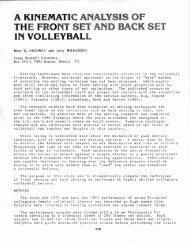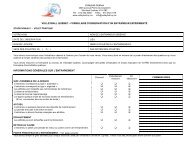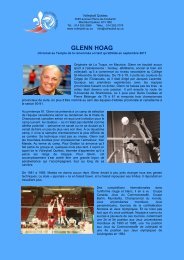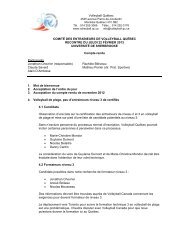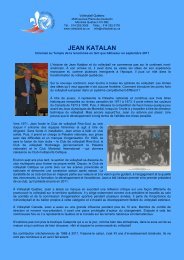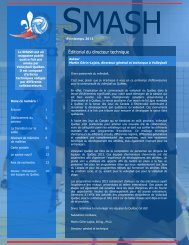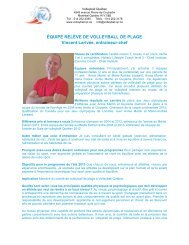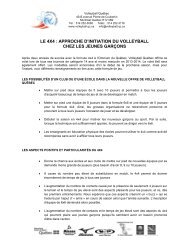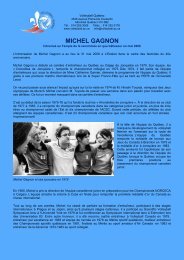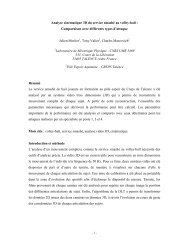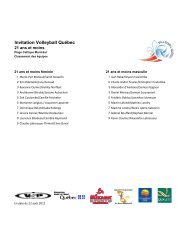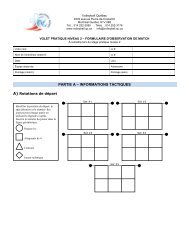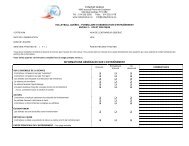An Analysis of the volleyball serve
An Analysis of the volleyball serve
An Analysis of the volleyball serve
Create successful ePaper yourself
Turn your PDF publications into a flip-book with our unique Google optimized e-Paper software.
Figure 17. Trunk lean to <strong>the</strong> left at impact increases height <strong>of</strong> reach and may reduce<br />
shoulder impingement if <strong>the</strong> abduction angle decreases- here <strong>the</strong> abduction angle may<br />
be too great.<br />
Follow Through and Landing<br />
Following impact with <strong>the</strong> ball, <strong>the</strong> hitting arm will continue to move across <strong>the</strong><br />
body in shoulder extension and adduction, while <strong>the</strong> trunk continues to flex<br />
(Figure 18). The follow through should be as long as possible, so that <strong>the</strong> high<br />
speed <strong>of</strong> <strong>the</strong> hitting hand and arm at contact can be decreased over <strong>the</strong><br />
greatest time and distance possible. This will decrease <strong>the</strong> force per unit time<br />
that has to be applied to <strong>the</strong> arm to decrease <strong>the</strong> speed. In terms <strong>of</strong> angular<br />
impulse momentum, <strong>the</strong> arm has a large angular momentum that is <strong>the</strong><br />
product <strong>of</strong> <strong>the</strong> moment <strong>of</strong> inertia <strong>of</strong> <strong>the</strong> arm and <strong>the</strong> angular velocity <strong>of</strong> <strong>the</strong><br />
arm during <strong>the</strong> swing. The muscles must apply a large angular impulse in <strong>the</strong><br />
form <strong>of</strong> eccentric contractions to decrease this considerable angular<br />
momentum to zero following <strong>the</strong> hit.<br />
The <strong>serve</strong>r should land on both feet when landing from <strong>the</strong> jump. Some<br />
<strong>serve</strong>rs land on one foot (<strong>of</strong>ten <strong>the</strong> non-dominant leg) only, producing very<br />
high impact forces on <strong>the</strong> landing leg, a fact also noted by Coleman (1993) in<br />
front row spiking. Landing on both feet will decrease <strong>the</strong> landing for ces by on<br />
each leg by half and will also ensure that <strong>the</strong> <strong>serve</strong>r is ready to play defense<br />
when <strong>the</strong> ball is returned from <strong>the</strong> <strong>serve</strong>. However, this may be difficult given<br />
<strong>the</strong> amount <strong>of</strong> trunk lean utilized in <strong>the</strong> service.



